By Chris Rufo
During the chaos of the Chinese Civil War, the communist revolutionary Mao Zedong found himself besieged. The Nationalists had encircled his army. His men were panicked, bloodied, and undersupplied.
In October 1934, the Communists initiated one of the most desperate and audacious maneuvers in military history: a 5,000-mile strategic retreat that would become known as the “Long March of the Red Army.”
Over the course of the yearlong retreat, Mao’s ranks were devastated. His men died of starvation, cold, disease, and violence, and defeat seemed imminent.
But after securing his defenses, Mao launched a counterattack against the Nationalists, chased his enemies into the sea, and declared the Communist Party the sole and legitimate ruler of the People’s Republic of China—a stunning reversal of fortune.
Flash forward a few decades and the German-American political theorist Herbert Marcuse believed the New Left was in a similar position.
By the mid-1970s, the FBI had dismantled the nation’s main revolutionary organizations.
As the radical movement was disintegrating, Marcuse turned to the young activists in his political orbit, especially the German student leader Rudi Dutschke, who — during the previous decade — had helped spread campus revolts across Europe.
Having failed to forment change through terror, Dutschke proposed a new strategy for social upheaval: The “long march through the established institutions” — a direct allusion to Mao’s military campaign.
Dutschke encouraged student radicals to put down their arms and burrow themselves in the universities, schools, media, and social services, capturing the means of knowledge production in order to subvert them — or, in Marcuse’s words, “working against the established institutions while working in them.”
Marcuse encouraged the young radicals to create a series of “counter-institutions” that could serve as a new apparatus for social change.
He thought that the New Left, using the university as its starting point, should “break the information monopoly of the establishment.”
Through these new bases of support, Marcuse believed, the young radicals could launch their “cultural revolution” and usher in “a transformation of values which strikes at the entirety of the established culture.”
Race politics, women’s liberation, radical environmentalism — all could be harnessed for the process of the disintegration of the cultural status quo.
Marcuse implored the students to do this work slowly, patiently, and methodically.
It would take time, but they would eventually be able to take the theoretical knowledge they developed in the universities and spread it by “contagion” through society, undermining traditional culture and shattering the existing hierarchy of values.
The radicals heeded Marcuse’s advice.
After graduation, many of the left-wing students cleaned up, put on solid-colored ties, and went to work in the institutions.
Their united front had been defeated, but the dialectic carried on.
Even the Weathermen—members of the infamous Weather Underground group which carried out a series of high-profile terror attacks in the late 1960s and early 1970s—devised a plan to reestablish their credibility with the activist Left and resurface in a leadership role.
Wanted by the FBI, the Weatherman had retreated to a network of safe houses. But by 1974, the Weatherman appeared ready for a second act.
The remaining members of the group, led by Bernardine Dohrn, Bill Ayers, and Jeff Jones, published a new manifesto called Prairie Fire—an allusion to the Mao Zedong aphorism “a single spark can start a prairie fire”—and distributed it to radical organizations, coffeehouses, and college-town bookstores.
Gone was the violent, adversarial language of the counterculture. They no longer spoke in the blunt language of “kill a pig or blow up a building.”
Instead, they spoke in a high-minded intellectual tone and railed against the great “isms”: capitalism, racism, sexism, imperialism, colonialism.
They tacitly acknowledged their mistake in believing their bombing campaign would bring about revolution and proposed, instead, to use the “weapon of theory” to awaken the masses and build political consciousness.
The general line of Prairie Fire, which was radical at the time, now reads eerily familiar: the United States was founded on racism, sexism, slavery, and genocide; the ruling class then set about with “the institutionalizing of white supremacy.”
The solution, for the Weathermen, was to follow Marcuse’s lead and embark on an inside-outside game of marching through established institutions.
Dohrn, Ayers, and Jones put special emphasis on radicalizing the education system.
They presciently understood that public schools could be co-opted by white, college-educated activists.
They called on “radical teachers” to form an “anti-racist white movement” and enter working-class and minority schools in order to “radicalize other teachers, organize the parents, teach and encourage [the] students.”
Meanwhile, the Weathermen suggested, that black radicals emerging then from prisons could “[stir] the imagination and [raise] the vision of victory” through riots, disruptions, sabotage, and prison revolts.
The Weathermen printed 40,000 copies of Prairie Fire and surreptitiously organized a national conference to herald their return. They assembled the entire spectrum of radicals on the University of Illinois campus in Chicago and planned for a unity summit.
But the conference, despite the high-minded rhetoric about “cultural identity,” “anti-racism,” and “white privilege,” turned into a farce.
The black radicals feuded with the white radicals. The women denounced the men. The vegetarians revolted against the cafeteria chicken. Accusations of racism ricocheted across the floor.
Later that year, the Weathermen splintered for the last time. Dohrn, subjecting herself to punishing self-criticism, finally broke. “I am making this tape to acknowledge, repudiate, and denounce the counterrevolutionary politics and direction of the Weather Underground Organization,” she said in a rambling audio confession.
She was guilty of “naked white supremacy…and chauvinist arrogance”—and, with this final admission, the Weather Underground was done.
After Dohrn’s confession, the Weathermen made their final pivot: they would slowly come out of hiding and reenter the bourgeois world.
Beginning in 1977, the Weathermen gradually negotiated their surrender. To their surprise, only one Weatherman, Cathy Wilkerson, served any prison time—just 11 months—for the string of bombings that marked their early years.
Although the Weathermen’s final gambit with Prairie Fire and the Chicago conference was a failure, it established a deeper precedent.
The way forward was not through the messy politics of revolutionary action, but through the manipulation of symbols and ideas.
The language of Prairie Fire would become the entire vocabulary of American intellectual life: “institutionalized racism,” “white supremacy,” “white privilege,” “male supremacy,” “anti-racism,” “corporate greed.”
This period also saw the establishment of the basic rituals for left-wing institutions that continue to this day: emotional manipulation, confessions of privilege, and elaborate displays of guilt.
Beginning in the late 1970s, the entire constellation of New Left radicals, from the graduate students of Herbert Marcuse to the urban guerrillas of the Weather Underground, shed the trappings of the counterculture and returned to the place where their activism had once begun: the university campus.
As the student radical turned Brown University professor Paul Buhle explained in his 2013 book Marxism in the United States: “To the question: ‘Where did all the sixties radicals go?,’ the most accurate answer would be: neither to religious cults nor yuppie-dom, but to the classroom.”
This transition was nearly invisible.
The public considered the radical movement as good as dead. In 1981, the New York Times summarized the entire Weather Underground affair as a “classic tragedy” and portrayed the Weathermen as entitled, narcissistic, delusional, and irrelevant.”
Despite these public dismissals, the New Left was silently making inroads in academia. Over the years, Marcuse’s students and followers gained professorships at dozens of prestigious universities, including Harvard, Yale, Georgetown, Duke, and the University of California, Berkeley.
The Weathermen, in spite of their participation in political terror campaigns, found a welcome home in the academy, too.
Dohrn, who had promised to “lead white kids into armed revolution,” became a professor at Northwestern.
Ayers, who had laid bombs at the Pentagon and the US Capitol, became a professor at the University of Illinois.
Even Kathy Boudin, who served a long prison sentence for her involvement in a 1981 armored car robbery that left one Brinks guard and two police officers dead, became a professor at Columbia.
In total, approximately half of the most active Weathermen managed to secure positions in the education field.
The rise of the New Left in academia is symbolic of a larger shift in American education.
While the public was lulled to sleep by the resolution of the Cold War, radicals in the West patiently executed their long march through the academy.
Over time, they
- secured positions of influence there,
- legitimizing their ideas in sympathetic journals,
- purging reactionaries from the faculty, and
- recruiting cohorts of graduate students who would transform the spirit of the revolutionary communiqués into a dense academic mass.
In retrospect, their ascension was inevitable. The radicals had learned bare-knuckled politics in student protests, guerrilla factions, and underground bomb factories. It was only a matter of time before they asserted dominance over faculty meetings and academic conferences.
They were able to use their old tactics of manipulation—accusations of racism, evocations of guilt, and privilege—to push out more conservative scholars and delegitimize traditional conceptions of knowledge.
Their revolution might have failed in society, but it worked all too well in academia.
First published in the New York Post and Chris Rufo’s Substack
From the new book “America’s Cultural Revolution: How the Radical Left Conquered Everything” by Christopher F. Rufo.
America’s most effective conservative intellectual proves once and for all that Marxist radicals have taken over our nation’s institutions.
In the 1960s, Mao launched China’s Cultural Revolution. Cities grew overcrowded. Technocrats demanded progress from above. Anyone opposed was sent to be “re-educated.” China’s revolution was bloody, fast, and a failure, but what if America started a revolution at the same time, based on the same bad ideas, and it’s just been slower, calmer, and more effective?
In his powerful new book, Christopher F. Rufo uncovers the hidden history of left-wing intellectuals and activists who systematically took control of America’s institutions to undermine them from within.America’s Cultural Revolution finally answers so many of the questions normal Americans have, such as:
• Why is nearly every major corporation bending the knee to a far-left agenda?
• How did DEI suddenly become the department no institution can continue without?
• Why is race the main thing America’s rich, white elite wants to talk about?
• When did the left adopt all this doublespeak, saying progress is a lack of progress, equality is not equality, speech is violence, and violence is speech?
• Has the goal of the left, for a century, actually been the destruction of every Western institution?
Readers may not know the names of Herbert Marcuse, Angela Davis, Paulo Freire, and Derrick Bell, but they will recognize the ideas they spread. How their radical, destructive ideology slowly worked its way from prisons to academia to classrooms to your human resources department will come as a shock.
Failing to act soon, Rufo warns, could allow the radical left to achieve their ultimate objective: replacing constitutional equality with a race-based redistribution system overseen by bureaucratic ‘diversity and inclusion’ officials. Most Americans don’t want this, but most Americans are no longer in control of our institutions. If the mainstream media’s depiction of a failing dystopia in need of a fresh start never sounded right to you, this expose and call to arms is the book you’ve been looking for.


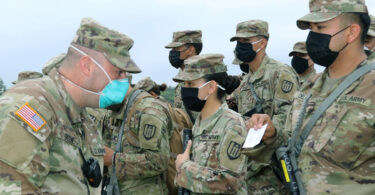
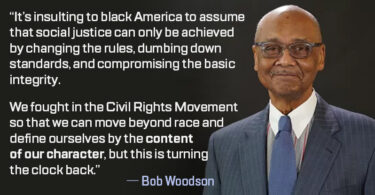
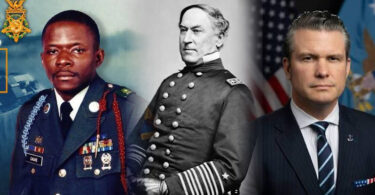
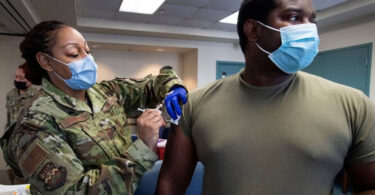
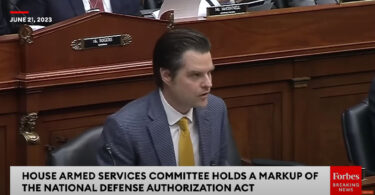

Leave a Comment